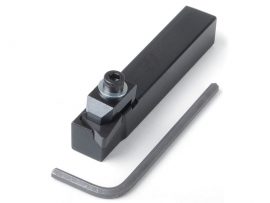| Insert Style | DNMG 331 F1 |
|---|---|
| ISO Number | DNMG 110404-F1 |
| I.C. | 3/8 |
| T | .187 |
| R | .015 |
| Grade | VP5615 |
Back to Replacement Parts
55 Deg Insert (DNMG 331 F1)
-
For the obsolete 55° Negative Rake Insert Tool Holder, P/N 7610
SKU: 7612
Category: Replacement Parts
Related products


Ceramic Insert Tool Holder
Negative Rake Ceramic Insert Tool Holder, includes a hold-down screw and hex wrench.
-
Add to cart
Add to WishlistRemove from Wishlist
Add to Wishlist
